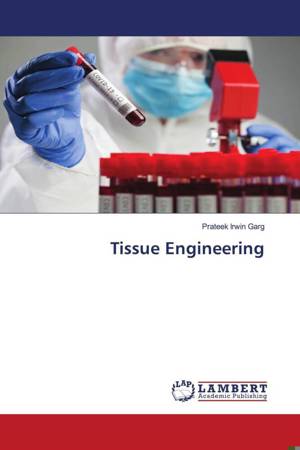
- Afhalen na 1 uur in een winkel met voorraad
- Gratis thuislevering in België vanaf € 30
- Ruim aanbod met 7 miljoen producten
- Afhalen na 1 uur in een winkel met voorraad
- Gratis thuislevering in België vanaf € 30
- Ruim aanbod met 7 miljoen producten
Zoeken
Omschrijving
Tissue Engineering can be defined as " a combination of the principles and methods of life sciences with that of engineering, to develop materials and methods to repair damaged or diseased tissues, and to create entire tissue replacements" The early practice of medicine relied largely on palliative management of pain and distress. As science contributed to this art, pharmaceutical approaches to change the body's physiology, vaccines to prevent communicable diseases, or surgery to remove diseased parts, became and largely remain the standard medical therapies. Until more recently, most scientists and clinicians believed that damaged or diseased human tissue could only be replaced by donor or with totally artificial parts. Tissue engineering promises a more advanced approach in which organs or tissues can be repaired, replaced or regenerated for more targeted solutions.
Specificaties
Betrokkenen
- Auteur(s):
- Uitgeverij:
Inhoud
- Aantal bladzijden:
- 132
- Taal:
- Engels
Eigenschappen
- Productcode (EAN):
- 9783659880131
- Verschijningsdatum:
- 26/11/2024
- Uitvoering:
- Paperback
- Formaat:
- Trade paperback (VS)
- Afmetingen:
- 152 mm x 229 mm
- Gewicht:
- 204 g

Alleen bij Standaard Boekhandel
+ 135 punten op je klantenkaart van Standaard Boekhandel
Beoordelingen
We publiceren alleen reviews die voldoen aan de voorwaarden voor reviews. Bekijk onze voorwaarden voor reviews.











